Last week I was contacted by Logan from Best Rifle Scope Review to write an article for them. I don’t have sufficient knowledge on the subject and I don’t do this for compensation, so I declined, but we did have a nice chat. I figured that I would instead write a basic intro to rifle scopes based on what I know from my personal use. If you are an experienced shooter, there won't be much here for you, but if you are just starting out, this may give you some basic info.
The Rifle Scope
These days there is a huge variation when it comes to rifle scopes. You can get anything from red dot scopes for quick target acquisition for applications like three gun competitions to computes assisted scopes that will calculate and adjust for your bullet trajectory for when, well, you want to shoot at stuff that is really, really far away. You also have everything in between.
Since my main focus when shooting, is hunting, I have decided to focus on the more common options for a scope that could be used together with a standard hunting rifle. And while there is a vast number of considerations that could be taken into selecting a scope, since here we are talking about the basics, that’s exactly what I will try to cover.
So, you just bought your first rifle. You have selected the appropriate caliber and action for the game you are planning on hunting. Now you shift your focus to the next counter and start looking at the scopes. Shift your gaze away from that two foot long night vision scope, and focus on the standard scopes. The first thing that you should notice is that there are two main variant: a fixed magnification scope and a variable magnification scope. Each can be a good option depending on your rifle set up.
- Fixed Power Scope
Your first option will be a fixed magnification scope.
A fixed magnifications cope is exactly what it sounds like. It offers a fixed magnification. The Weaver scope you see in the above picture is a four (4) power scope. That is a pretty standard magnification and offers a lot of versatility. Such scopes will have a designation that features two digits such as 4x28. Each number represents specific information about the scope. The first number is the magnification power of the scope. In this case “4”. This means the object will appear approximately four (4) times larger when viewed through the scope. The second number represents the diameter of the objective lens (the one opposite of where you look), measured in millimeters. In this case that’s “28” millimeters. The larger the objective lens, the more light it can gather, and the clearer the picture will be especially in low light conditions or under large magnification.
The Weaver Classic Rimfire 4x28 Scope you see above is a fairly good representative of the scopes in this category. Their main advantage is that they are small, light, and clear. They are a very good match for small caliber rimfire rifles. I have mine mounted to a single shot .22LR rifle. While it is always tempting to go for more magnification, make sure your scope doesn’t too greatly exceed the capability of the rifle or your skill level. With the above rifle I take realistic shots of up to 50 yards. At that distance, with the above scope, drilling a target should not be a problem.
- Variable Power Scopes
The second basic option you will have is a variable magnification scope.
A variable magnification scope will allow you to adjust the amount of magnification provided by the scope. The Nikon scope in the above picture is a pretty common example. Such scopes will have a designation that looks like 3-9x40. The “3-9” in this case represents the variation in magnification provided by the scope. Here you can adjust the magnification from a power of three (3) to a power of nine (9). The lat number, just like with the fixed power scopes designates the diameter of the objective lens in millimeters. Variable power scopes generally have larger objective lenses because higher magnifications require more light for a clear sight picture.
Adjustment of the magnification is typically done by rotating a ring near the eye piece.
It is important not to get carried away when selecting such a scope. The desire always seems to be to get more and more magnification, but that can be very counter productive. Too much magnification can be worse than too little. With too much magnification you will have a harder time acquiring your target and once on your target, you may end up seeing nothing but a close up shot of a patch of magnified hair. A scope like the Nikon Prostaff 3-9x40 that you see above will serve the needs of most beginners. If you hunt in an area where you have wide open lands and long distance shots of over 200 yards are common, then more magnification may be needed. I have the scope mounted on a .308 rifle. It is good practice to turn the scope to low magnification, four (4) power or so, before going hunting. That will let you get on target quickly. If you need to acquire an animal at longer range, you can turn up the magnification later.
Mounting The Scope
Now that you have picked out a scope, the next step is to attach it to the rifle. The first thing you should make sure is that your rifle is tapped for a scope; meaning that there are small screw holes pre-drilled that will accept the scope components. Most modern rifles should come ready for a scope, but it’s something you should double check.
The process will require two pieces of gear, a rail or base, and scope rings. The base or rail will screw onto the rifle. The scope rings will attach to the base/rail, and then hold the scope into place. Rails/bases and scope rings come in different variations, so be careful when selecting components. Here are two examples:
As you can see from the above picture, the first base and scope ring will be incompatible with the second set. Unfortunately, you will have to look at compatibility charts provided by manufacturers to make sure all of the components work together. Additionally, both the base and the rings come in different heights depending on how much clearance you need for the scope. It is extremely frustrating to mount your scope only to realize that the bolt on your action can’t clear the scope.
Once you have the components, the mounting process is simple. The rail or bases screws onto the rifle with the provided screws.
The scope rings then attach around the scope, and are in turn tightened onto the base.
Leave the scope rings slightly loose around the scope so that you can adjust it into the right position. Make sure that the vertical and horizontal axes of the scope are actually vertical and horizontal.
Additionally, you will want to move the scope back and forth in the mount until you get a clear sight picture from the position in which you typically hold your rifle. Your eye should not be touching the scope, and it should be at such a distance when you holding the rifle that no portion of the sight picture is obscured. There are much more complex issues involved here like parallax adjustment, but for a beginning set up, I don’t think it is worth mentioning anything more than to make sure that when the scope is mounted, and you hold the rifle the way you ordinarily would, the picture in the scope is not obstructed. This will require moving the scope back and forth in the scope rings.
Sighting In A Scope
Now that you have selected your scope and have mounted it, you have to sight it in. Without this final step, the crosshairs you see when you look through the scope are meaningless. You have to adjust the set up so that the crosshairs align with where the bullets are impacting.
The issue is more complex than it appears at first glance. The problem is that the scope and the rifle barrel will never be truly parallel to each other, and that bullets fly in an arc, not a straight line. The result is that when you sight in your scope, you have to sight it in at a specific distance. Once done, you will know that with this rifle, with specific ammunition, at a specific distance, the crosshairs on the scope will exactly match where the bullets are impacting. When shooting at different ranges, you will have to compensate by aiming higher or lower than the desired impact point, or with more advanced scopes by dialing in the corrections into the scope.
The first step however is to sight in your scope. The first decision you will have to make is at what distance you would like to sight in your scope, i.e. at what distance do you want the crosshairs to match the bullet impact site. The answer will depend on what type of hunting you do, and what type of rifle and ammunition you are using. There is no point in sighting in a scope at 200 yards when you are shooting .22LR ammunition which will never be used at such range. I sight in my rifles at 50 yards, even my .308. The reason is that I generally hunt in northeastern woodlands, and I virtually never have visibility of over 50 yards. As such, most shots are taken under that range. If you are hunting in wide open areas, where you are routinely taking 200 yard shots, than perhaps that would be an appropriate distance to sight in your scope, assuming you are firing the proper ammunition.
So, you have picked a range at which you want to sight in your rifle, let’s say 100 yards. You go to a rifle range, set up a bench with sand bags, position your rifle, take aim at your target at the 100 yard mark, and fire. What ends up happening is this:
You intended to hit the target at the crosshairs, but the bullet impacted at the red X. You fire a few more shots, with the exact same result. Now what? Well, now you have to adjust the scope so that the cross hairs align with the spot where the bullets are impacting. The adjustment will be done with the scope turret. In the middle of your scope will be a horizontal and vertical cap. Once you remove them, you will see adjustment dials.
On most scopes there will be an indication of the adjustment increments that can be made. On the above scope, each click moves the cross hairs 1/4 inch at 100 yards. If you are sighting in at a different distance, you will have to extrapolate the amount of adjustment (for the above scope, you will get 1/2 inch adjustment at 50 yards, and 1/8 adjustment at 200 yards). By looking at your target you can approximate exactly how far you need to move the cross hairs. Assuming that in the above made up picture of a scope sight, each marking represents an inch, you would have to move the cross hairs right about an inch (4 clicks at 100 yards) and about inch and a half up (6 clicks at 100 yards).
Make the adjustments and fire again. Continue to make small adjustments as necessary until you start to group hits at the location of the crosshairs.
Now, the above is the ideal example of sighting in a scope, and of course there are many other methods. This is just the one I use. Unfortunately, on many occasions, you will mount a new scope, go to the range, set up your bench, fire a few shots, and not a single one will land on the target. How do you make adjustments then? Most people then start making wild adjustments in the hopes of getting a bullet somewhere on the board. There are two much better ways to deal with such a scenario.
If you are at an indoor range, start by sighting in your scope at a very short distance. Bring the target in at 15 yards, and repeat the above process. The closer target will make sure that the bullets land on paper so you can make your adjustments. Once that is done, move the target back to the desired distance, and refine your adjustments.
If you are at an outdoor range, many will reserve the short distances for pistols only. As such, you will not be able to use the above technique. In such a situation, instead of aiming at the target, pick a spot (small pebble, piece of paper, etc) on the sand backstop or on the ground near the target. Fire at that spot and look to see where the bullet impacts the sand. There will be a visible puff of sand or dirt that will go up when the bullet impacts. If it is two feet to the right of the spot where you aimed, then you know in which direction and by approximately how much to dial in your scope. Once the bullets start impacting the sand near the area where you are aiming, you can transition to the target and refine your sighting.
Lastly, now that you have sighted in your scope at a particular range, let’s say 100 yards, what do you do when you need to shoot at different distances. If you have watched any movies about snipers, you have probably seen them adjust their scope right before shooting as their spotter calls out distances and wind conditions. Some precision scopes have turrets designed for exactly such use. However, for the average user with a normal scope, that is not a viable approach.
The most common technique used by hunters is a D.O.P.E. (Data On Previous Engagements) chart or ballistics chart. Such a chart estimates based on the physical properties of the ammunition, the path the bullet will take, and consequently where it will impact at any given distance.
As I mentioned earlier, bullets travel in an arc. The moment the bullet is fired, it starts to decelerate and to fall towards the ground. When you sighted in your scope at 100 yards, you intersected that bullet arc at a particular point.
Generally speaking, if your scope’s line of aim intersects the bullet arc at exactly 100 yards, then at 50 yards the bullet will be impacting higher than your point of aim (the crosshairs), while at 200 yards, it will be impacting below your point of aim. The exact shape of the ark depends on the ammunition you are using. A .22LR will have a much more pronounced arc that a flatter flying bullet from a cartridge like the .17HMR.
There are ballistics calculators available online which will give you the exact point of impact for your specific rifle and ammunition combination to any given distance. I find however that for the average hunter, just taking a few test shots at the range will give you a good picture of what adjustments you will need to make to your aim when in the field. If your rifle is sighted in at 100 yards, fire a few shots at 50 yards, a few at 150 yards, etc. Note how far from the point of aim the bullet hits. If you see that at 200 yards your bullets are consistently impacting an inch below your point of aim, then in the field just aim about an inch higher than your desired target when shooting at that range. If you like, make yourself a chart recoding the drop for reference in the field. Again, if you are hunting at very long ranges, more precise calculations will be required, but for general use, most people can make reasonable adjustments without too much hassle.
Now, these are the basics, or at least as I know them. There is much more you can do and learn on the subject. If you have the above covered however, you should be able to get out in the field and conduct a successful hunt, at least from the sighting perspective.
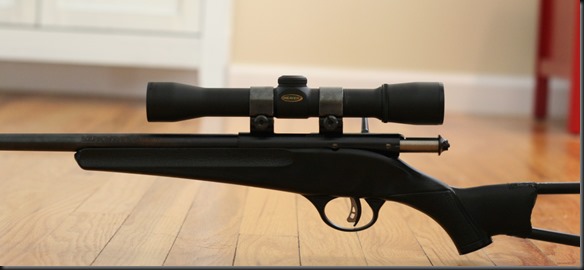
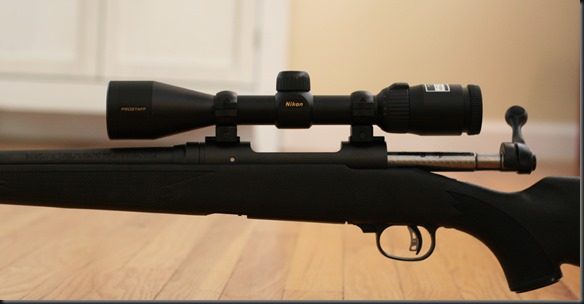
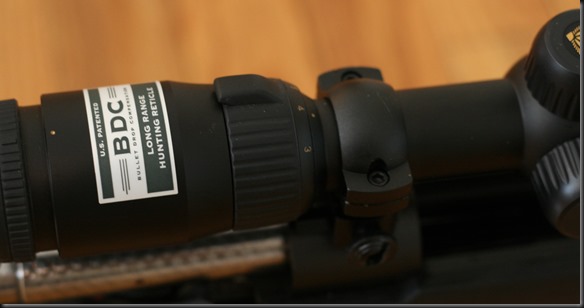
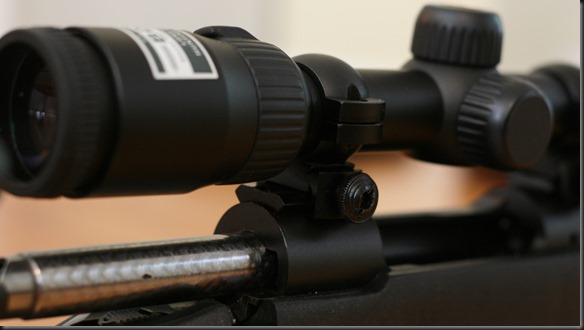
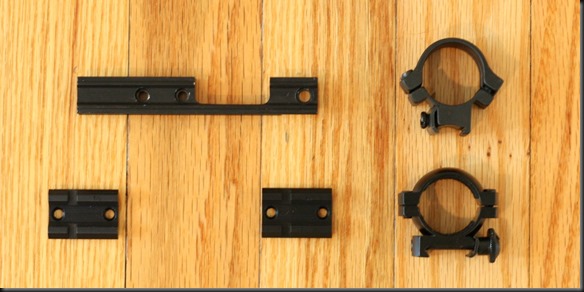

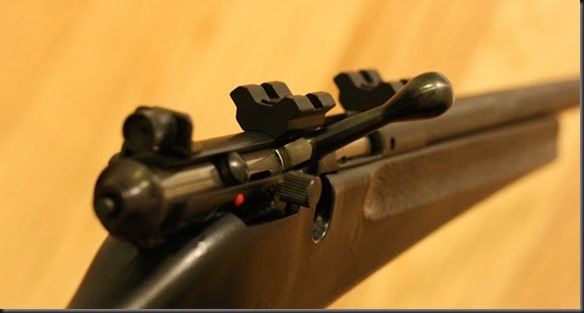
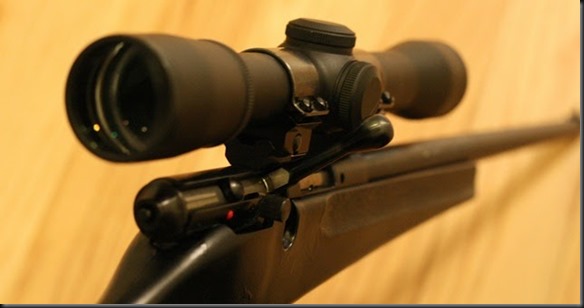




No comments:
Post a Comment